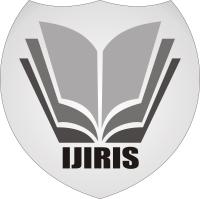Artikel,
SWARM INTELLIGENCE TECHNIQUES WITH CONSCIOUSNESS AND COMMONSENSE IN ARTIFICIAL ECONOMICS FOR ENERGY CONSERVATION IN ENRICHED COGNITIVE ARCHITECTURE
IJIRIS:: International Journal of Innovative Research in Information Security, Volume VI (Issue I): 01-14 (Januar 2019)1. Aleksander. I and Dunmall. B, Axioms and Tests for the Presence of Minimal Consciousness in Agents, 2. Antonio Casella and Giuseppe Giuliani, Scientific thought and commonsense, presented at the “Conference Science as Culture” Como-Pavia, 15-19 September1999. Available at:http://fisicavolta.unipv.it/percorsi/philosophy.asp , accessed on 08/08/2 3. Barry Smith, D.W. Smith, Commonsense, Cambridge University Press, P 394-437, 1995. 4. Gordon, A. and Hobbs, J. A Commonsense Theory of Mind-Body Interaction. AAAI Spring Symposium on Logical Formalizations of Commonsense Reasoning, Stanford University, March 21-23, 2011. 5. Hobbs, J. R. and Gordon, A. S, Toward a large scale formal theory of commonsense psychology for metacognition. In Proceedings of AAAI Spring Symposium on Metacognition in Computation, pages 49–54, Stanford, CA. ACM, 2005. 6. Hugo Liu and Push Singh, ConceptNet: a practical commonsense reasoning toolkit. BT Technology Journal, 22(4):211-226. Elaborates on ConceptNet, 2004. 7. John McCarthy, `Programs with Commonsense'', in Proceedings of the Teddington Conference on the Mechanization of Thought Processes, Her Majesty's Stationery Office, London1959, Reprinted in McCarthy, 1990. 8. Minsky M, The Emotion Machine: Commonsense Thinking, Artificial Intelligence, and the Future of the Human Mind. Simon & Schuster, New York, 2006. 9. Shylaja. K.R, Dr. M.V.Vijaykumar, Dr. E.V. Prasad & Darryl. N. Davis, “Cognitive Architecture for evolving conscious actions into commonsense actions on Agents” presented at WCECS-2013, San Francisco, California, USA, October 2013. 10. Shylaja. K.R, Dr. M.V.Vijaykumar, Dr. E.V. Prasad & Darryl. N. Davis, “Consciousness and Commonsense Critics in Cognitive Architecture: Case study of Society of Mind Cognitive Architecture”, accepted by IJALR for upcoming edition, 2012. 11. Singh P, EM-ONE: Architecture for Reflective Commonsense Thinking, PhD Thesis, 2005. Available at http://web.media.mit.edu/~pus. 12. Singh, Barbara Barry, and Hugo Liu, Teaching machines about everyday life. BT Technology Journal, 22(4):227-240. Reviews several commonsense reasoning systems we are building at the lab--ConceptNet, LifeNet, and StoryNet, 2004. 13. Singh, Marvin Minsky, and Ian Eslick , Computing commonsense, BT Technology Journal, 22(4):201-210, 2004. 14. Vijayakumar. M.V. and D.N. Davis, Soft Artificial Life, Artificial Agents and Artificial Economics, International Journal, 2009. 15. Vijayakumar. M.V. and D.N. Davis, Design of Micro-agents based on the Artificial Economics, International Conference on Artificial Intelligence (ICAI’09) USA, ,2009. 16. M. A. Montes de Oca, T. Stutzle, M. Birattari, M. Dorigo, "Frankenstein's PSO: A composite particle swarm optimization algorithm," IEEE Transactions on Evolutionary Computation, vol. 13, no. 5, pp. 1120-1132, Oct. 2009. 17. C. Weineng, Z. Jun, C. Henry S.H., Z. Wenliang, W. Weigang, S. Yuhui, Ä novel set-based particle swarmoptimization method for discrete optimization problems," IEEE Transactions on Evolutionary Computation, vol. 14, no. 2, pp. 278-300, Apr. 2010. 18. M. R. AIRashidi, M. E. El-Hawary, Ä survey of particle swarm optimization applications in electric power systems," IEEE Transactions on Evolutionary Computation, vol. 13, no. 4, pp. 913-918, Aug. 2009. 19. Beni.G, Wang.J, Swarm Intelligence in cellular robotic systems, precede NATO advanced workshop on robots & biological systems, Italy June 26-30 in 1989. 20. Winkielman&Schooler, 2011, Splitting consciousness: Unconscious, conscious, and metaconscious processes in social cognition, EUROPEAN REVIEW OF SOCIAL PSYCHOLOGY 2011, 22, 1–35 21. Singer, W., 2000, Phenomenal conscious ness and consciousness from a neurobiological perspective, In T. Metzinger (Ed.), Neural correlatesof consciousness: Empirical and Conceptual questions (pp. 121–138). Cambridge, MA: MIT Press. 22. Searle, J., 1997, The mystery of consciousness, New York: New York Review Press. 23. Robin, Schmidt, Shamantics, 2007, Conscious Studies, online book, available at http://en.wikibooks.org/wiki/consciousness_studied.pdf 24. M.V Vijayakumar, 2008, Society of Mind Approach to Cognition and Metacognition in a Cognitive Architecture, PhD Thesis (University of Hull, UK, 2008). 25. K.R.Shylaja, M V Vijayakumar, E V Prasad and Darryl. N Davis, 2012, Consciousness and Common Sense critics in Cognitive Architectures: Case Study of Society of Mind Cognitive Architecture, IJALR 2012. 26. Jacoby, L. L., Yonelinas, A. P., & Jennings, J. M., 1997, The relation between conscious and unconscious (automatic) influences: A declaration of independence. In J. C. Cohen & J. W. Schooler (Eds.), Scientific approaches to consciousness (pp. 13–48). Mahwah, NJ: Erlbaum..
DOI: doi://10.26562/IJIRIS.2019.JAIS10080
Zusammenfassung
Energy conservation is the challenging issue in cognitive architecture are efficiently handled by adopting commonsense, consciousness concepts with swarm intelligence techniques. An Enriched ECACECC (Enriched Cognitive architecture for conservation of energy using consciousness & commonsense layer) is proposed and designed. A commonsense Strategy and proposed algorithm in cognitive architecture are implemented in simulated Testbed. The result of performance ore and crystal evaluation, The Life Expectancy of Cognition versus BDI Agents and commonsense, consciousness with Swarm agents and Consumption rate of Fungus and Ore Collection and life expectancy are discussed. The results obtain from ECACE are compare with Society of mind Approach for distributed cognitive architecture (SMCA) agent’s and shows that commonsense, consciousness with swarm agent’s performance is better than SMCA performance in energy conservation.
